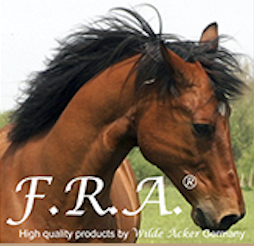
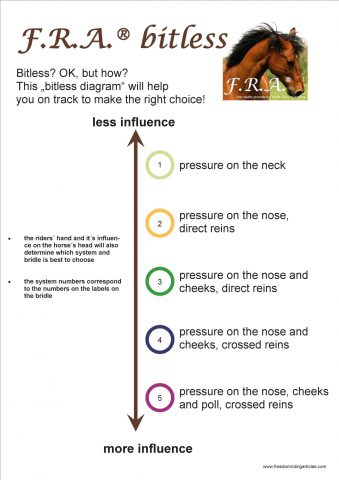
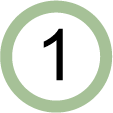
Operating principle system 1: pressure on the neck
System:
While we do not immediately think of a bridle when we talk about the neckrope, we can certainly talk about a bridle, because the ring is the only physical aspect of communication between horse and rider. The construction of F.R.A.® neckrope is intended for professional use, a 12mm stainless steel core is sheathed in soft pure cotton. A node construction makes it possible the neckrope in the desired diameter to be adjusted.
Position:
To ride with a neckrope is a subtile form of communication, that communication in which the rider consciously or unconsciously, determines the location of the neckrope.
Influence:
Riding without any form of physical communication, as described so well without a ring, of course requires a certain degree of skill. With the experienced rider who has the neckrope there a way to subtly influences which he mentally, from his seat and other physical aids will need to strengthen. Certainly mentally brings the rider balanced mind of knowing that, coming in a less controllable situation, he still has something extra to work with. That extra exposure with the neckrope is possible. Especially in these cases are of physical aids for halts and turns together and linked to the highly enhanced by the neckrope. First you feel that with respect to a neckrope certainly can talk about bridle. Evident in the use of a neckrope is the discriminatory power, and optimally, of course, directly to the complete release of the neck in the removal of the ring.
Suitability:
The degree of experience of the rider or rider is crucial. The neckrope for the experienced rider a tool for body aids are very balanced in every situation to stabilize. It gives him or her the possibility of a highly sophisticated communication with the horse to build. In contrast, the same rijring excellent tool that helps the rider aids body more power to zettenIn general you can say that with rijring driving in a relatively small confined space begins and depending on your experience can build from there further. Even the less experienced rider will however, if he at least the condition of the initial confined space has been created, whether or not accompanied by an instructor this form of dealing with his horse can experience and develop. Combined with the above suggests that the assessment of the very experienced or less experienced rider in any situation depends on which horse to ride rijring opportunities. Factors as a confined space or not, known or unknown environment and character of the horse play a comprehensive major role.
Finally:
Riding a horse with a neckrope can bring a incredible pleasure. The emergence of an intimate, often mental connection, makes this method of driving an unprecedented experience. The bond of trust between horse and rider in this way can result in no other way to be established. The sense of balance, especially in the case that the rider also omit the saddle is incredibly fast and well developed, since blockages due to physical obstacles that there are no more, can then no longer an obstacle. Rider and horse can lead to optimal development of the aforementioned sense of balance, and melting as it were, together with a joint instead of two axes. The resulting freedom of movement for horse and rider give opportunities to relatively quickly develop a better feel for riding in all disciplines.
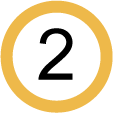
Operating principle system 2: Pressure on the nose
In general:
Horses naturally react to the pressure on their noses, every horse will listen to a pressure aid exercised on its nose. A well-known aid is a running stiff cavesson, known by the name bosal, of old used by the Indians. Next to the bosal we also have the well-known hackamore bridle with its lever action.
System:
A bosal bridle consists of three parts, the stiff cavesson attached to the cheek piece which freely runs to behind the chin and a running rein which has been connected to the end of the cavesson by means of a special knot. This running rein is called “mecate”. It is rather long, the part that is not used as rein is used as a lead-rope simply attached to the pommel or to the rider’s trousers. The single cavesson or nose band is the bosal, together with the“mecate” and the cheek pieces we speak of the bosal-bridle. The cavesson is usually made of inter woven neat leather, the “mecate” is made from hemp or horsehair and the cheek piece is made of leather. The materials used for this bridle can differ a great deal.
A hackamore bridle interacts indirectly to the pressure on the nose via the training aids by means of a lever construction. The brackets are hanging from the cheek piece and the cavesson and the curb chain and are in line connected to the brackets. Depending on the type of bracket the rein attachment varies. It is the great variety of types of brackets that enable the gradation of the desired pressure. F.R.A. offers a large assortment of complete bridles and nose parts with or without brackets. Next to the diverse designs in leather there is also a cotton design.
Position:
A Bosal, as well as the cavesson of a Hackamore as well as the nose bands of other bitless bridles should be situated on the hard part of the nose.
Inluence:
Looking at the Bosal (the running stiff cavesson itself) the pressure will be exercised on the entire left side of the nose part when opening the mecate, leaving the right side completely free. So the Bosal operates with a perfect measure of discrimination and because of that extreme clarity. The horse will side pass because of this pressure and consequently turn to the right. This is being accomplished by the central attachment of the mecate to the lower side of the stiff running free cavesson. It stands to reason that opening the mecate to the left will have the opposite effect. By applying the opposite part of the mecate to the neck of the earlier mentioned aid, the horse will experience it as an incentive with which it will combine with the given pressure on the side of the nose, this phenomenon is known as “neck reining”. The symmetrical demand of the mecate results in a very good discrimination. Because of the free Bosal there is only pressure on the front of the nose which will be experienced as a halt signal. The direct release immediately decreases the used aid.
With the Hackamore the reversed pressure on the nose is influenced by the lever action. As a result of the toppling brackets a downward pressure will be experienced on the chin and in the neck. The rider balances his rein aids on the left- and the right-hand side to realize the desired pressure and because of that the horse’s response. It stands to reason the amount of pressure and the means of operation is dependent of the type of bracket and the rider’s hand.
Suitability:
With the Bosal bridle it is possible to build a refined, very clear communication. This bridle gives very good discriminating signals and the experienced rider will feel good with this bridle in a relatively short period. In general this bridle offers good possibilities for use with sensitive horses and in particular backing young horses. Of old the Bosal and mecate were used by the Indians and is of Spanish origin.
Using a Hackamore bridle, certainly one with a large lever action, demands an experienced rider. Only the experienced rider will be able to balance his aids on the nose as a result of simultaneous effects of pressure in chin and neck, due to undesired effects.
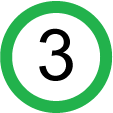
Operating principle system 3: Pressure on the nose and cheeks, direct handling of the reins.
System:
Next to the F.R.A.® side pull in system 3 we can also find several knotted F.R.A.® halters.
Side pull:
The leather noseband of this simple bridle ends in a ring on both cheeks to which the curb band and the cheek piece are attached. To the second ring at the same location the reins are attached which refines the rein handling. Added to this a small leather band connects the nose band across ways with the cheek piece, this keeps the nose band neatly in place and enables the rider to give pressure on the cheeks.
Rope-halters:
Knotted halters are provided in many varieties and designs, the F.R.A.® nh knotted halters distinguish themselves by a variety of measurements in the thicknesses 6, 7, and 8 mm. Next to a basic design, the “Babia”, in three measurements there is also a 6 mm. design in 5 measurements called the “capal”, and a 7 mm. design in three measurements called the “pablo”. The latter two designs are provided with a “nubuck”, a leather neck and nose protection and are meant for professional use. It is exactly this measurement of a knotted halter that plays an important role, the halter serves to fit the horse’s head without unnecessary slack.
Position:
As it is with all bit less bridles it also counts for the side pull, and the knotted halters that the noseband must rest on the hard part of the nose, approximately there where the nose bone begins.
The curb band of the side pull design may instinctively feel taut but may absolutely not be drawn tight. This is to prevent wrenching of the bridle.
Influence:
Side pull:
This bridle literary does what it says, it pulls the head sideward, moving the hand away from the neck results in the fact that the combination of the connection from the cheek piece to the nose band via both straps and ring gives pressure on the opposite cheek: turns. Pulling the rein (halts) results in the discriminating aid of pressure on the noise, which results in pace changes and or halts. All this of course in combination with the other supporting aids. The bridle can only be used for lunging when use is made of a lunging bit piece. You hook the lunging bit piece into the rings where normally the reins are attached. For lunging with double lines and Pessoa lunging you can use the same rings.(available models F.R.A.® pardoes and F.R.A.® shango)
Knotted halter:
In great lines the under “Side pull” described influence is also applicable to knotted halters. We can say that the low, central attachment of the reins help the discriminating influence of the given aids considerably. Knotted halters may not be used for lunging.
Suitability:
The side pull and knotted halters are, because of their direct influence, very good simple bridles for the rider as well as the horse. They are used in combination with light rein contact and are very suitable for sensitive horses. Therefore the bridle is explicitly suitable to ride young horses and fiery sensitive horses. The bridles are also suitable to correct spoiled horses that are afraid of the rider’s hands. The simplicity of the bridle makes it also suitable for the beginning rider. Finally the bridles give fine possibilities to make a country ride, driving and long distance rides.
All bridles of system 3 may also be used as a halter.
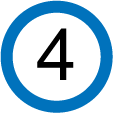
Operating principle system 4: Pressure on the nose and cheeks, chin crossed reins.
System:
In this system the noseband ends in a ring on either side to which the cheek pieces and both crossed straps are attached. These crossed straps are lead through a ring at the end of a short length of leather which in itself is attached to the rings of the nose band. The result is that the whole crossed part hangs a little lower than with the jaw crossed bridles (system 5). To the outer ends of the crossed straps the reins are attached. Furthermore this bridle is simple in design because of the lack of a brow band, throat latch and buckle which we normally find on a nose band. At the left hand side we find a buckle attachment in the cheek piece, it is the only buckle which is needed to measure the bridle to size. Once the bridle fits you just simply put a bridle of this system on the horse’s head and you don’t have to readjust it anymore. For the F.R.A.® cotton bridles of system 4 counts the same, of course there are no buckle attachments or other leather like descriptions in that system line.
Position:
As it is with most bitless bridles it is also applicable to the system 4 bridles that the nose band must lie on the hard part of the nose, approximately there where the nose bone begins. The special design of these bridles cause a good and steady positioning on the horse’s head without having to attach or adjust anything.
Influence:
The chin crossed straps will cause, when you want to go to the left or to the right, that the horse will feel the pressure on the opposite side of the nose and cheek and subsequently it will follow the rider’s hand; turns as a result of the pressure. Simultaneous halts on both reins close the nose band and give possibilities to halt and changes of pace. The above mentioned left or right turn of both reins will always have a certain dose, because of the indirect reining, it is this dose that determines the discriminating influence. This results that a desired change will always have a smooth effect.
It stands to reason that the reining aids are supported by the other supporting aids. The little connecting latch that connects the rein leading ring to the nose band and the cheek piece causes a low positioning and a free running of the crossed curb bands which is very good for the release. Extra attention with this type of bridles must always be given to the maintenance of the crossed curb bands, the right maintenance will give the leather its suppleness to continuously experience the right release. The bridle may not be used for lunging with the single lunge and neither for the Pessoa lunge. For lunging with double lines you take off the reins and use the rings to attach the long lines.
Suitability:
The bridle is used in combination with light rein contact and is very suitable for sensitive horses. Therefore the bridle is particularly suitable for riding young horses and fiery sensitive horses. Apart from the fact that the bridle can be used as a halter it gives total freedom for the mouth which can be an advantage during country rides.
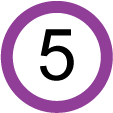
Operating principle system 5: Pressure on the nose, neck and cheeks, crossed reins on neck and chin.
System:
The leather noseband of these bridles, on the market known as the “Cook” system, is provided with rings on both sides just behind the cheek piece. Through these rings runs a flexible leather strap crossways over the chin, via the jaws over the neck.
On either ends of this strap the buckles or clips of the rein ends are attached. On the left side of the bridle you will find one buckle for the cheek piece adjustment and one buckle to attach the crossed straps. To protect the neck area both straps are provided with a soft padding. The straps should be placed in the loops of this neck padding in such a way that they have an equal length on either side.
The buckle of the chin band is the only buckle that is needed to secure the bridle to the head.
Position:
As it is with most bit less bridles it also applies to these bridles that the noseband must be placed on the hard part of the nose, approximately where the nose bone begins. The chin band may instinctively feel taut but may absolutely not be drawn tight. This is to prevent wrenching of the bridle. The cheek pieces of bitless bridles with a chin-, neck-crossed system will always tend to bulge out a little.
Influence:
With the crossed rein influence the pressure on the left side of the cheek is increased when the right rein is pulled, when pulling the left rein the pressure on the right cheek is increased with the effect of aids to start the turns. Equal influence on both reins cause pressure on the nose, the neck and the jaws all over the horse’s head. This enables the aids for a change of pace and a halt. It stands to reason that the dose of unequal influence will result in a similarly unequal pressure dose. For this system it means that the measure of occurring discrimination is dependent on the by the rider used dose in the rein aid. The crossed straps should be maintained well in order to guarantee a good release. It stands to reason that the other supporting aids play an important role.
The bridle can only be used for lunging, normally, or normally using a Pessoa, when use is made of the lunging bit piece. The lunging bit piece is hooked in the rings that guide the chin bands (the crossed chin bands are not used at that moment, in order not to let them hang loose they can also be hooked in). For lunging with double lines and for Pessoa lunging we use the rings of the crossed chin bands.
Suitability:
The bridle may be used for riding sensitive and less sensitive horses in all disciplines. The finely adjustable influences makes it with a light rein contact very suitable for dressage and on top of that it gives extra possibilities to ride less sensitive horses. In that category the bridle may also be used as a driving bridle. The bridle is technically not suitable to be used as a halter.
